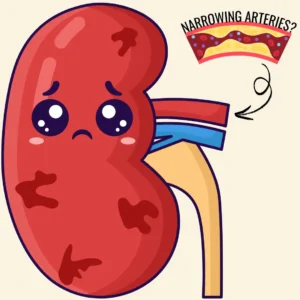Arterial Disease
CAROTID ARTERY DISEASE
Carotid Artery Disease, Endarterectomy, and Stenting: A Patient's Comprehensive Guide
Welcome to our informative page dedicated to providing essential information about Carotid Artery Disease (CAD), Carotid Artery Endarterectomy (CAE), and Carotid Artery Stenting (CAS). Whether you are seeking knowledge about the condition or exploring treatment options, this guide aims to empower patients with insights into causes, symptoms, diagnosis, and available interventions.
Understanding Carotid Artery Disease (CAD)
Carotid Artery Disease is a vascular condition characterized by the narrowing or blockage of the carotid arteries, major blood vessels that supply blood to the brain. This reduction in blood flow can lead to an increased risk of stroke, making early diagnosis and intervention crucial.
Causes and Risk Factors
Several factors contribute to the development of CAD, including:
- Atherosclerosis: Buildup of plaque in the carotid arteries.
- Age: Risk increases with advancing age.
- High Blood Pressure: Hypertension is a significant risk factor.
- Diabetes: Increases the risk of arterial damage.
- Smoking: Tobacco use accelerates the formation of plaque.
Symptoms
CAD may present without noticeable symptoms, making regular check-ups important. However, individuals with advanced disease may experience:
- Transient Ischemic Attacks (TIAs): Brief episodes of stroke-like symptoms.
- Speech or Vision Changes: Difficulty speaking or sudden vision problems.
- Weakness or Numbness: Particularly on one side of the body.
Diagnosis
Accurate diagnosis of CAD involves various tests, including:
- Carotid Ultrasound: Non-invasive imaging to assess blood flow and detect narrowing.
- CT Angiography or MRI Angiography: Detailed imaging to visualize the carotid arteries.
- Angiogram: X-ray with contrast dye to highlight blood vessels.
Carotid Artery Endarterectomy (CAE)
CAE is a surgical procedure aimed at removing plaque from the carotid arteries to restore normal blood flow. It involves:
- Incision: A small incision is made in the neck to access the affected carotid artery.
- Plaque Removal: The plaque is carefully removed, restoring the artery’s diameter.
- Closure: The artery is closed, and the incision is sutured.
Carotid Artery Stenting (CAS)
CAS is a minimally invasive procedure that involves placing a stent to widen the narrowed carotid artery. It includes:
- Catheter Insertion: A catheter is threaded through blood vessels to the site of narrowing.
- Stent Placement: A mesh-like stent is deployed to expand and support the artery.
- Closure: The catheter is removed, and the site is closed.
Post-Procedure Care
Following CAE or CAS, patients may undergo monitoring and are advised to:
- Take Medications: Blood thinners and other prescribed medications to prevent clotting.
- Lifestyle Changes: Adopt a heart-healthy lifestyle, including a balanced diet and regular exercise.
- Regular Follow-ups: Periodic check-ups and imaging studies to monitor the carotid arteries.
Conclusion
Empower yourself with knowledge about CAD, CAE, and CAS to make informed decisions about your vascular health. While this guide provides valuable insights, it is essential to consult with healthcare professionals for personalized advice and treatment plans.
If you have concerns about CAD or are considering intervention options, discuss them with your healthcare provider. Early detection and appropriate management play a crucial role in preventing complications and promoting overall cardiovascular health.
RENAL ARTERY STENOSIS
Renal Artery Stenosis: Causes, Symptoms, Diagnosis, And Treatment
Welcome to our informative page dedicated to providing essential information about Renal Artery Stenosis. Whether you are seeking knowledge about the condition or exploring treatment options, this guide aims to empower patients with insights into causes, symptoms, diagnosis, and available interventions.
Introduction
Renal artery stenosis happens when the blood vessels supplying to the kidneys become too narrowed or blocked. This can reduce blood flow, leading to high blood pressure and kidney problems. Catching it early is important to avoid serious health issues like kidney failure and heart problems.
Causes
The two main reasons for renal artery narrowing are:
- Fatty Deposits (Atherosclerosis): This is the most common cause. Fat builds up in the arteries, making it harder for blood to reach the kidneys.
- Fibromuscular Dysplasia (FMD): This is a rare condition where the artery walls grow abnormally, leading to blockages.
Other risk factors include smoking, diabetes, high cholesterol, obesity, and a family history of heart disease.
Symptoms
Many people don’t notice symptoms at first, but possible signs include:
- Hard to Control Blood Pressure: If medication isn’t helping, this could be a sign.
- Sudden or Worsening High Blood Pressure: Especially in younger people or those without a history of hypertension.
- Kidney Problems: Poor kidney function can reflect in abnormal blood tests.
Diagnosis
Doctors use different tests to find renal artery narrowing:
- Blood Tests: To check kidney health.
- Imaging Tests:
- Ultrasound: A simple scan to check blood flow.
- CT Angiography (CTA): A detailed scan of the arteries.
Treatment
Treatment depends on how serious the narrowing is. Options include:
- Medications:
- Blood Pressure Pills: Such as beta-blockers and diuretics.
- Cholesterol Medications: To prevent fatty buildup.
- Blood Thinners: Like aspirin to stop clotting.
- Healthy Lifestyle Changes:
- Eating a balanced diet with less salt and unhealthy fats.
- Exercising regularly.
- Quitting smoking.
- Medical Procedures:
- Angioplasty and Stenting: A small balloon opens the artery, and a stent (metal mesh tube) keeps it open.
Conclusion
Renal artery narrowing is a serious but treatable condition. Without treatment, it can lead to kidney failure, severe high blood pressure and heart problems. If you have hard to control high blood pressure or kidney issues, talk to a doctor about getting tested.

